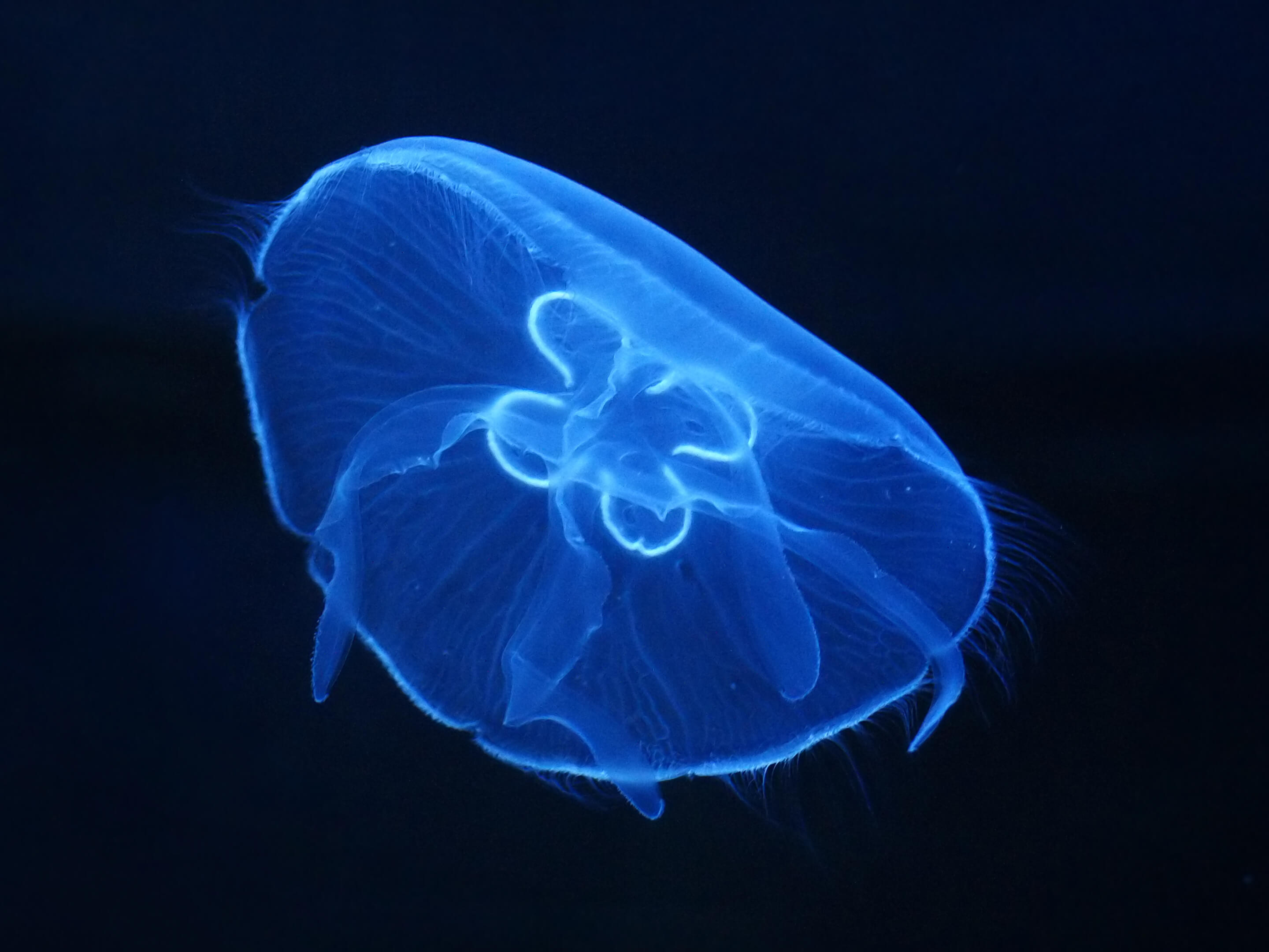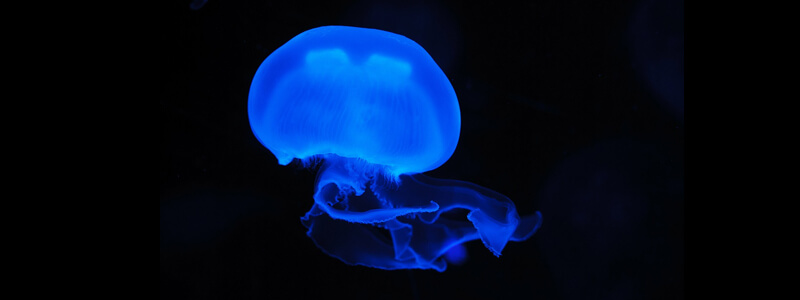A 58-year-old woman presents to a walk-in clinic with a severe rash on her arms, legs and torso. The previous day she had swum the English Channel in 12 hours. When you examine her, you can see well-demarcated welts all over the affected areas with surrounding erythema and mild oedema. She is otherwise well and has no evidence of circulatory or respiratory compromise.
1. What is the most likely cause of her rash?
Show Answer
The patient has suffered jellyfish stings. Warmer weather can encourage an increase in the numbers of jellyfish around the UK; particularly moon jellyfish and compass jellyfish.

Photo of moon jellyfish, sourced from Wikipedia
Courtesy of Hans Hillewaert CC BY-SA 4.0
2. Outline the main steps in her management.
Show Answer
The management of jellyfish stings is as follows:
- Remove any remaining tentacles.
- Remove any nematocysts (small poisonous sacs)
- Analgesia – this can be simple, such as paracetamol and ibuprofen
- Topical hydrocortisone can be used for small areas (this patient needed oral prednisolone as the oedema was widespread)
- Antihistamines
3. What should the patient be careful of for the next couple of weeks?
Show Answer
The patient should try not to itch the affected areas. Any remaining nematocysts can release their toxins and cause further discomfort. The mainstay of treatment is therefore symptomatic in the form of analgesia and antihistamine.





